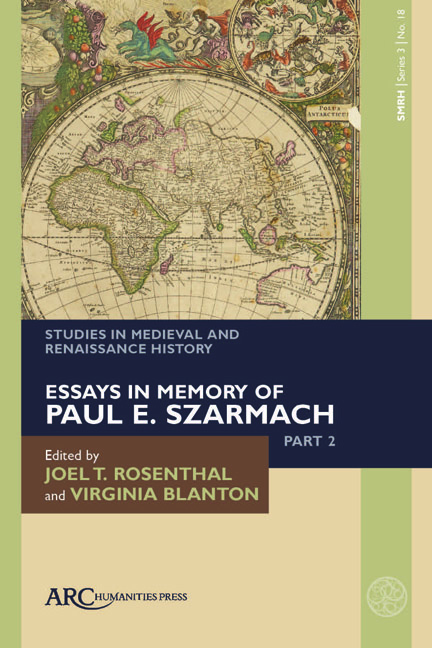Book contents
- Frontmatter
- Contents
- List of Illustrations
- Introduction
- The Development of Constantinian Themes and Their Manifestation in Writings and Coinages of Early England
- Echo and Icon : Life in Stone at Bewcastle, Cumbria
- Jerome of Strido at Chelles: The Legacy of Quedlinburg Codex 74
- Revisiting the Maaseik Zoomorphic Embroideries
- The Old English Version of Alexander’s Letter to Aristoteles and its Use of Binomials
- Agency and Obedience : The Afterlife of St. Swithun in Anglo-Saxon England
- B. and the Vita Harlindis et Renulae
- Wheelock’s Bede and Its Supplementary Materials : Goals and Methods
Jerome of Strido at Chelles: The Legacy of Quedlinburg Codex 74
Published online by Cambridge University Press: 13 April 2024
- Frontmatter
- Contents
- List of Illustrations
- Introduction
- The Development of Constantinian Themes and Their Manifestation in Writings and Coinages of Early England
- Echo and Icon : Life in Stone at Bewcastle, Cumbria
- Jerome of Strido at Chelles: The Legacy of Quedlinburg Codex 74
- Revisiting the Maaseik Zoomorphic Embroideries
- The Old English Version of Alexander’s Letter to Aristoteles and its Use of Binomials
- Agency and Obedience : The Afterlife of St. Swithun in Anglo-Saxon England
- B. and the Vita Harlindis et Renulae
- Wheelock’s Bede and Its Supplementary Materials : Goals and Methods
Summary
THAT THE WOMEN's community at Chelles featured a scriptorium during the abbacy of Charlemagne's sister, Gisela (r. ca. 785–ca. 810), is now widely accepted. Based on manuscript survivals, moreover, we know that the scriptorium was industrious as well as sophisticated, capable of producing deluxe manuscripts for export as well as more ordinary books for in-house or local use. In this chapter, I would like to focus on one book produced at Chelles early in that period to consider the nature of their intellectual labour and the extent of its reach, and to demonstrate that the women of the Chelles scriptorium did not just disseminate knowledge, they helped shape it.
Halle (Saale), Universitäts- und Landesbibliothek Sachsen-Anhalt, Quedlinburg Codex 74
Quedlinburg Codex 74 (Qu. Cod. 74) represents an early effort to produce a comprehensive collection of the letters of Jerome of Strido (ca. 342/47–420). It may be the earliest such initiative and, based on evidence of survivals, seems to have been extraordinarily well received from the time of its production in the late eighth century (ca. 785/90) into the early modern era. And yet, it is all but invisible to modern scholars of Jerome due to a combination of unfortunate variables. This essay is an attempt to pull this codex out of the shadows and into the limelight and to demonstrate its role in the development and transmission of Jerome's epistolary corpus.
At 417 folios (originally more like 470 fols.) and 32.5 × 21.5 cm, Qu. Cod. 74 is substantial. Though not a deluxe manuscript, it is an elegant one, clearly intended for private reading and study among an elite audience. Its folios are well ruled in long lines with double vertical border lines, compiled in gatherings of eight with hair-side facing out, following insular style, and copied by a set of skillful hands in a measured Caroline minuscule of the Chelles variety with titles in uncial. What ornamentation graces the folios distinguishes letter titles and openings, chapters, and key words, and assists navigation through the text: titles are rubricated in typical Carolingian fashion, usually in red ink, but sometimes with alternating green and red letters or letter groupings; large initials mark openings and key chapters or passages, and are sometimes rubricated or highlighted with a yellow wash (see Figure 3.1).
- Type
- Chapter
- Information
- Studies in Medieval and Renaissance HistoryEssays in Memory of Paul E. Szarmach, Part 2, pp. 33 - 72Publisher: Amsterdam University PressPrint publication year: 2024



